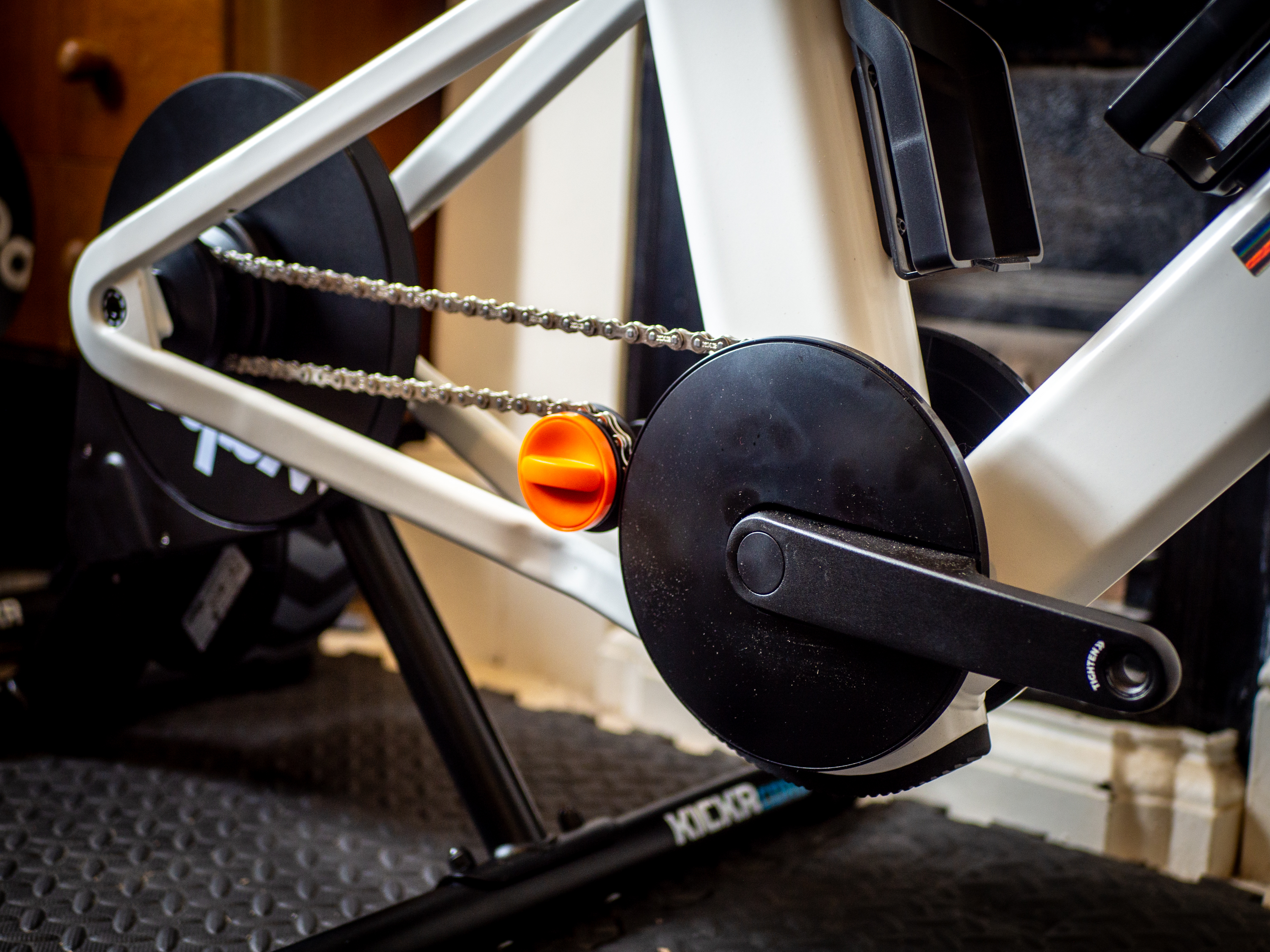Cyclingnews Verdict
A great value one-stop solution to riding indoors, but only Zwift users get full functionality, and the list of compatible smart trainers is currently small for the Zwift Frame
Pros
- +
Easy to set up and adjust for different riders
- +
Great value for smart bike functionality
- +
Light when compared to traditional smart bikes (made easier by two separate parts)
Cons
- -
Some trainer and app compatibility limitations
- -
Occasional shifter dropouts and sticky buttons
- -
Button tactility is poor
- -
Fixed crank length
You can trust Cyclingnews
A few years ago, Zwift teased an exciting smart bike project based on the design of its in-game Tron Bike. Unfortunately, amid the post-Covid slump that affected the industry, the project was eventually scrapped.
Since then, the launch of the Zwift Hub all but overhauled the pricing structure of the best smart trainers and eventually led to a partnership with fellow American indoor cycling giant Wahoo.
Then earlier this year, the brand unveiled the Zwift Ride.
It's best described as a smart bike, but in reality, it's unlike any other. It's actually the amalgamation of multiple parts, including the Zwift Frame, the Zwift Cog, a Wahoo Kickr Core smart trainer, and an adapted version of the Zwift Play controls. All of which will be explained in more detail below.
To the paying customer, there are actually two new products: The first is Zwift Ride, which pairs the Zwift Frame, Cog and integrated Play-style handlebars with the Kickr Core smart trainer. The second is the Zwift Frame, which foregoes the Kickr Core.
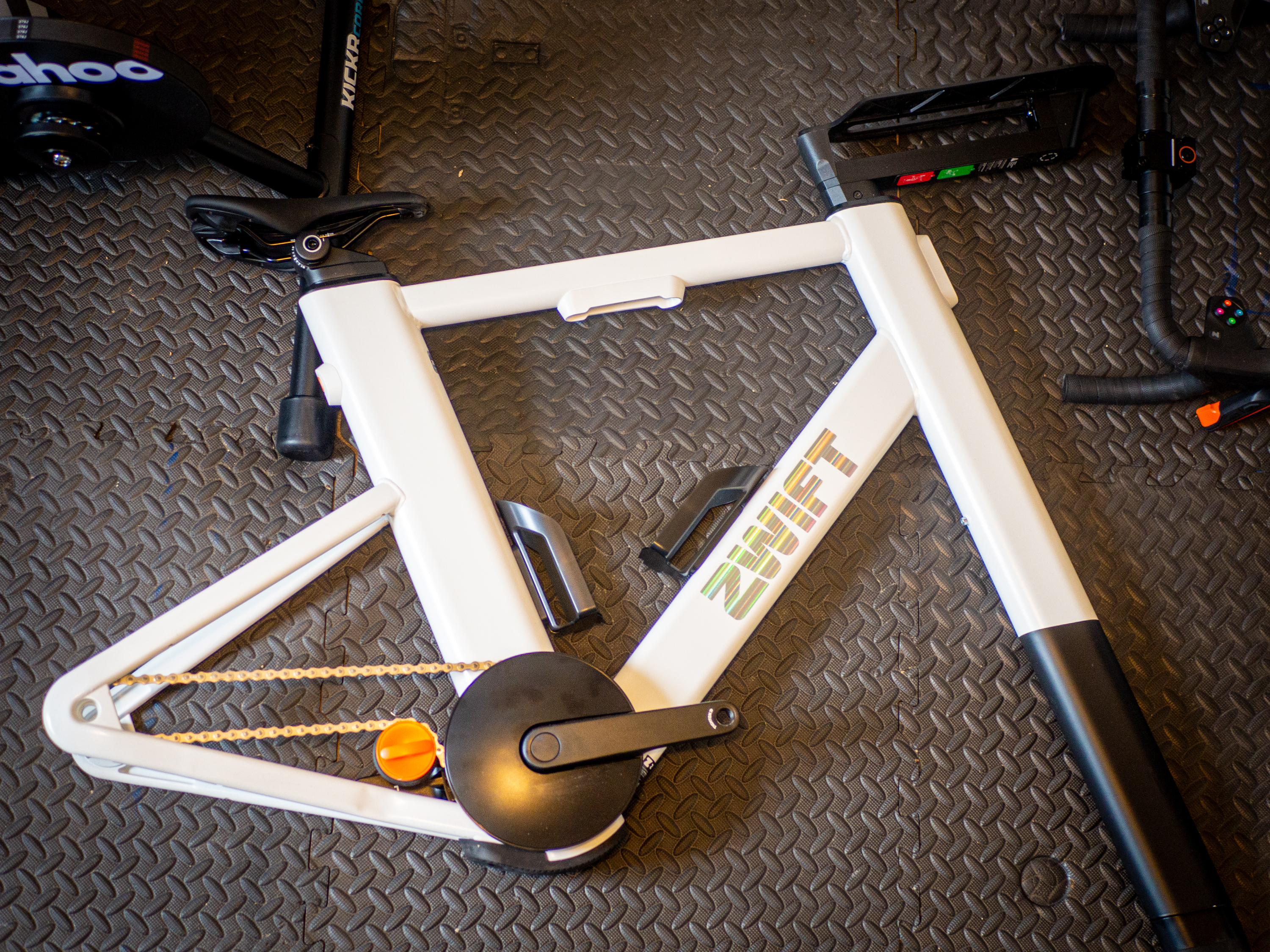
The Zwift Frame is the bit that's important here, as it's the bulk of what's new. It is a one-size-fits-all bike frame made from oversized steel tubes with a series of adjustment points at the seatpost, saddle, stem and handlebar.
At first glance, it simply replaces the bike portion of a traditional indoor cycling setup, but on closer inspection, there's more. At the handlebars, the shifters include a series of buttons that combine the functionality of Zwift Play controls and Zwift Click shifters, adding brake levers too. This lets you shift virtual gears, brake, steer, and navigate Zwift's menus all without removing your hands from the handlebars.
The latest race content, interviews, features, reviews and expert buying guides, direct to your inbox!
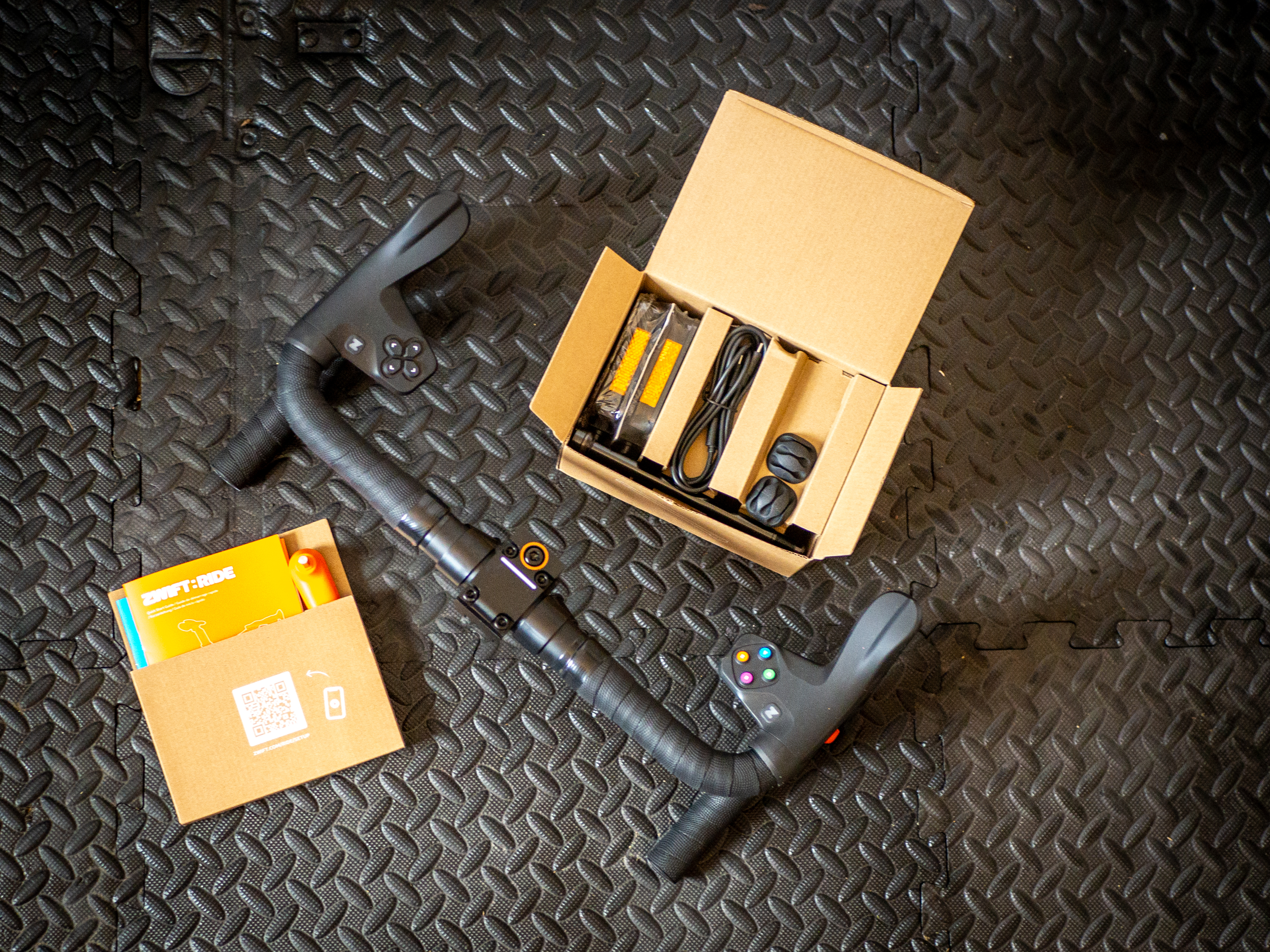
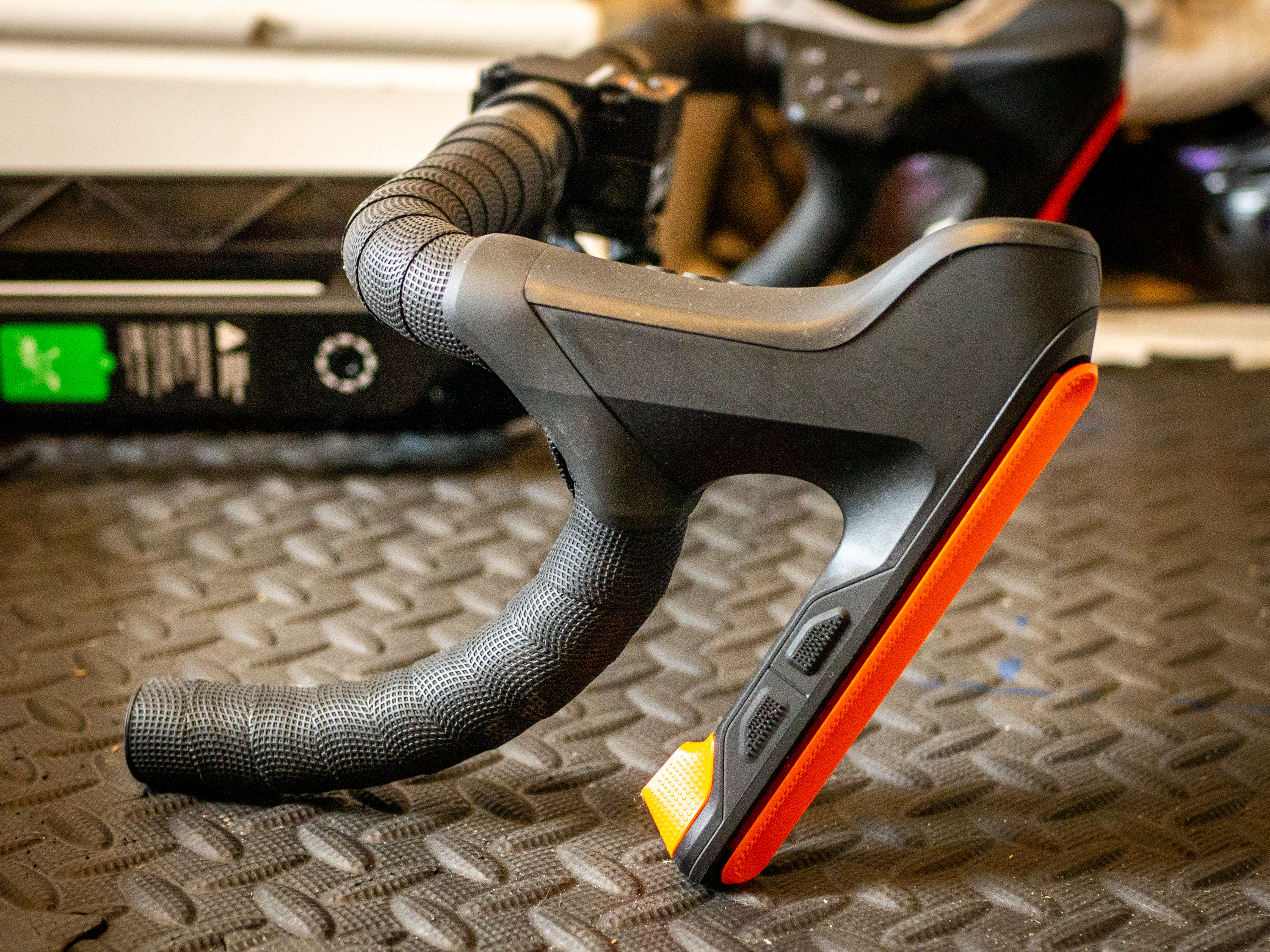
Whereas previously you'd mount your outdoor bike to a smart trainer, you instead mount the Zwift Frame, using a Zwift Cog in place of a cassette. Mechanically, it will fit onto any smart trainer, but due to the singlespeed gearing of the Cog, not all smart trainers are compatible from a software standpoint. The list is ever-growing, but I'll dive into this in more detail below.
If you already own a compatible trainer, for £749.99 / $799 the Zwift Frame will essentially convert it into a smart bike that's ready to ride and adjustable for multi-rider households.
For those needing to buy a trainer too, the Zwift Ride is an everything-you-need solution which comes with a Wahoo Kickr Core. It aggressively undercuts the existing smart bikes on the market at £1,199.99 / $1,299.99, although there is a shipping cost to be factored in.
Technically you're getting the Kickr Core Zwift One, but Importantly, the bones of the Kickr Core is the same revered smart trainer that it's always been, just with the Zwift Cog singlespeed sprocket at the rear. Read our Wahoo Kickr Core review for a deep dive.
Design and specifications
The Zwift Frame largely resembles a bike frame, with a traditional two-triangle design. The absence of a front wheel means the front fork is replaced by single leg approximately four inches thick that extends down to the floor. There's no foot at the bottom of this, and despite looking unbalanced at first, it's easily more balanced than a wheel would be.
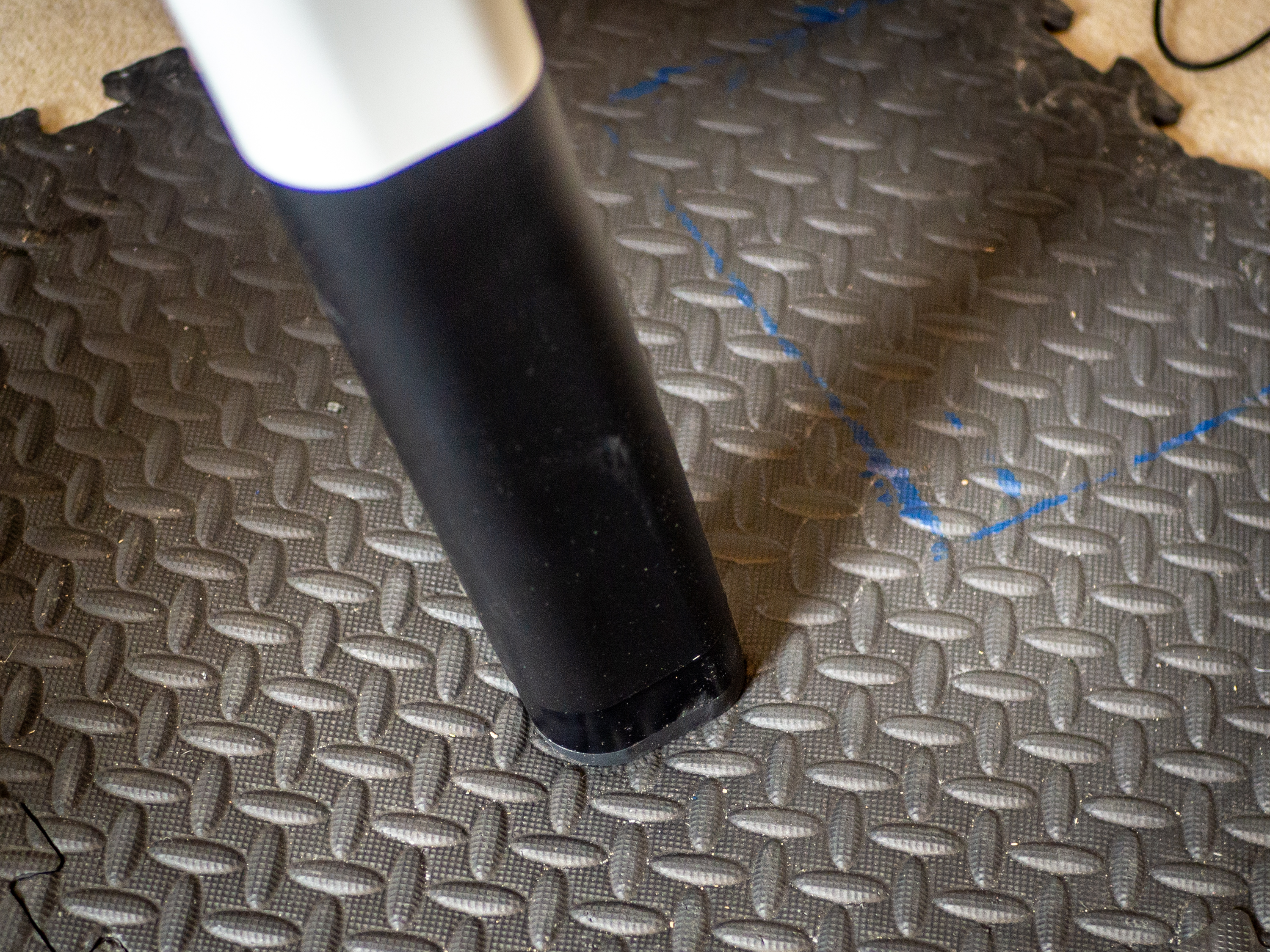
The frame itself is white, with a cool holographic Zwift logo on the down tube. It's made from steel and is pretty sturdy. The whole weight is around 17kg, not including the smart trainer.
The handlebar, which is 42cm wide with a drop of 125mm and 31.8mm clamp, sits in a channel that allows you to adjust the fore/aft position. This channel is then mounted onto what is essentially a quill stem that can be raised and lowered. Atop this whole ensemble is a small platform with a silicone cover, giving you somewhere to put your snacks and your phone (or, as the imprinted symbols suggest, pizza, donuts and drinks). An out-front laptop holder is also available as an optional extra.
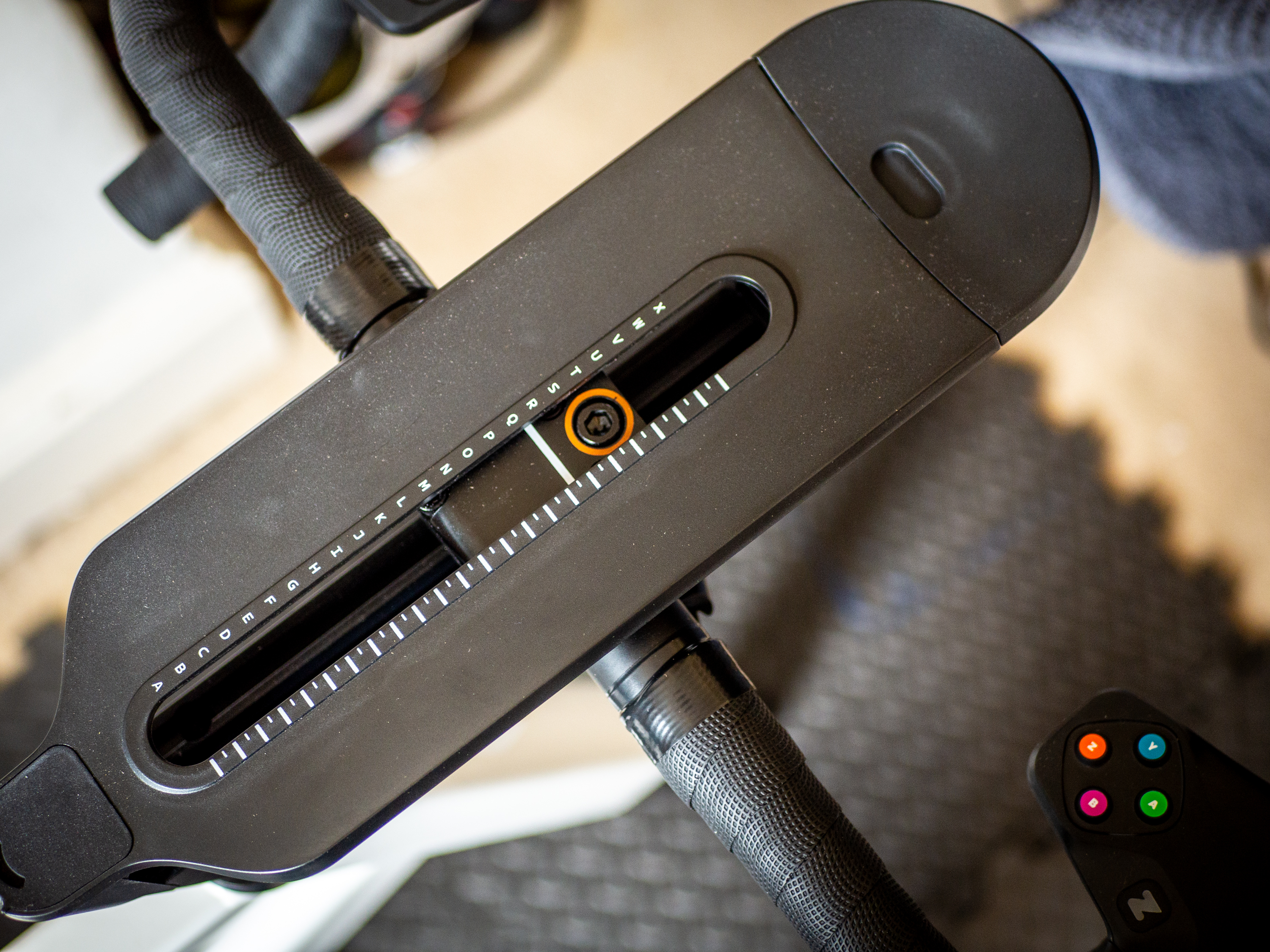
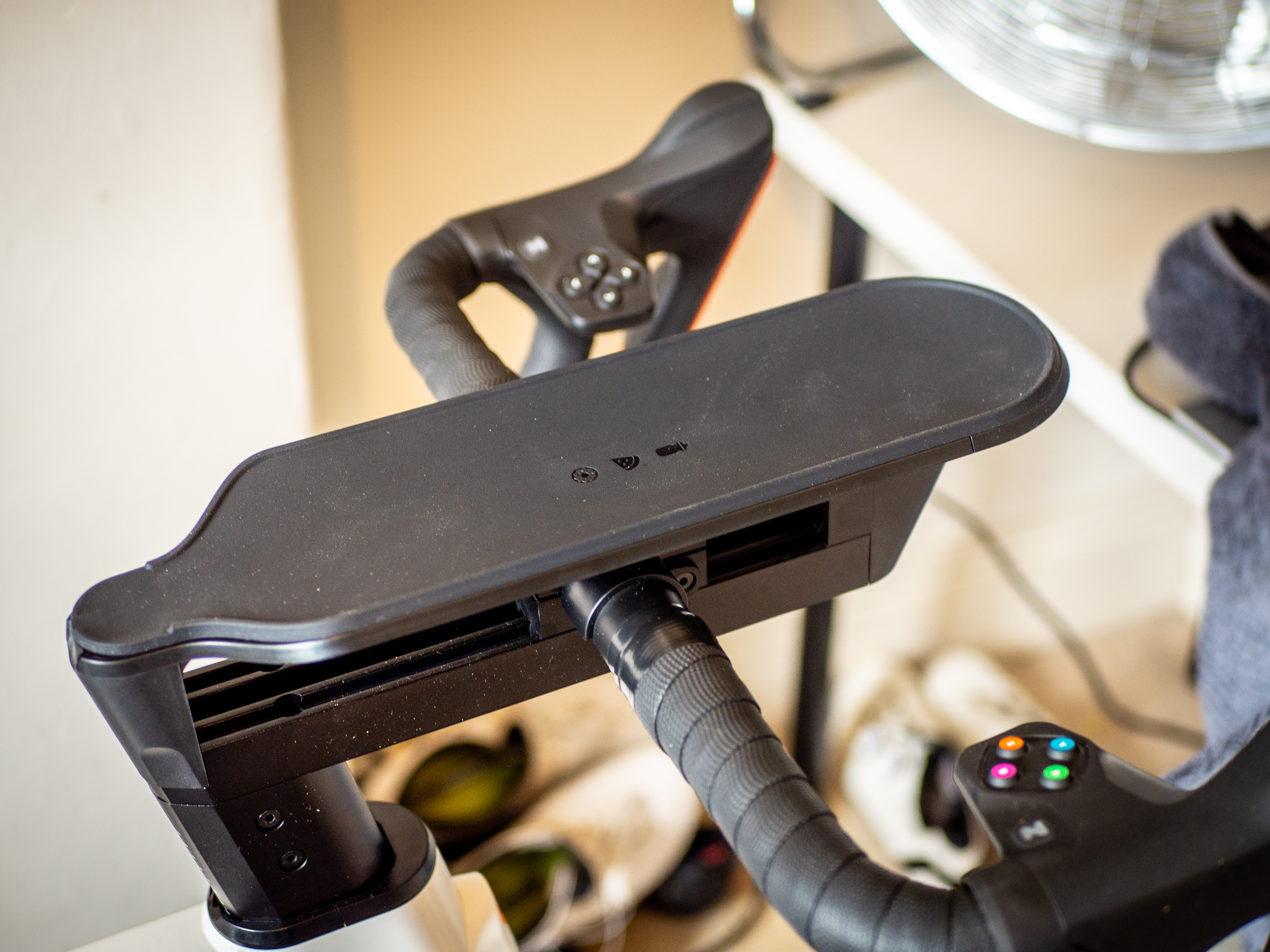

The seatpost can also be adjusted for rider height, as can the saddle's fore and aft, and its angle.
All adjustments are done using the included Frame Key, which is basically a hex key with a magnetic handle. Every adjustment point on the bike uses this same tool, making adjustment super simple. The magnetic handle clips it into a housing on the underside of the top tube, which keeps it within reach and means you can even adjust it without stepping off the bike.
The cranks are 170mm long, with a Q-factor of 150mm (modern Shimano road groupsets are 148mm). Flat pedals are included but you can fit your own clipless pedals when setting up. The same can be said for the saddle too, the included one is basic, but the traditional round rails mean you can easily swap in your chosen saddle.
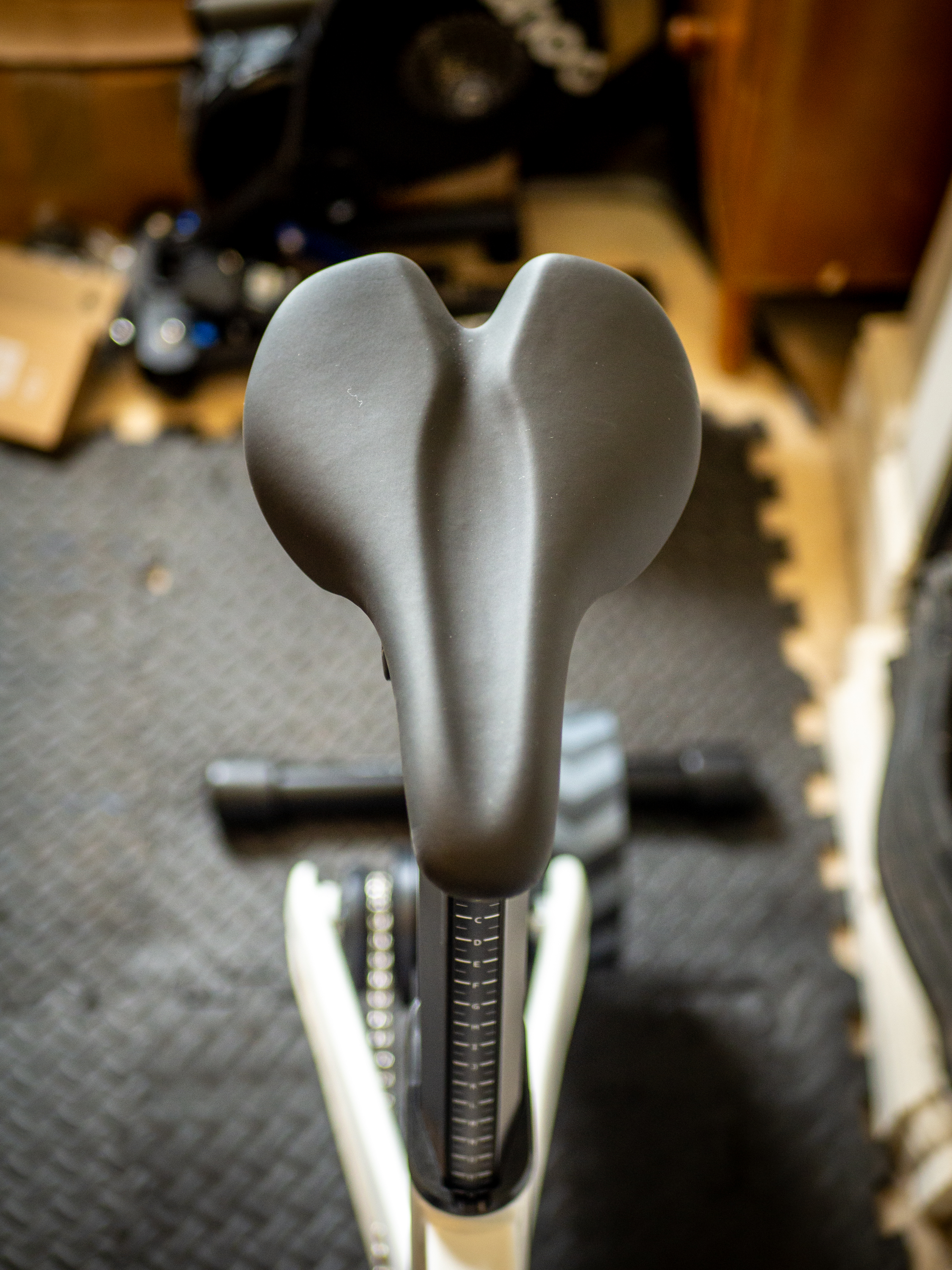
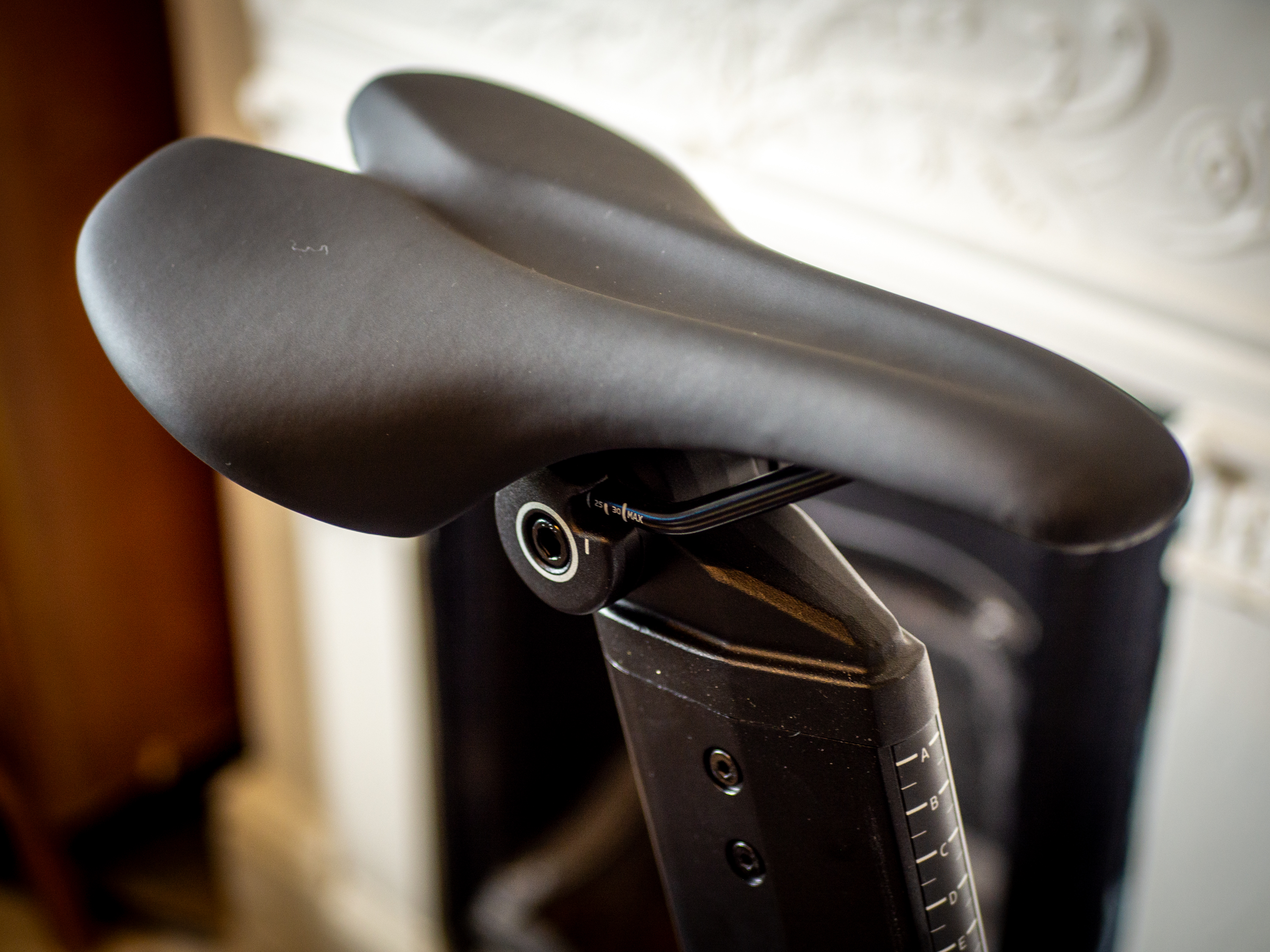
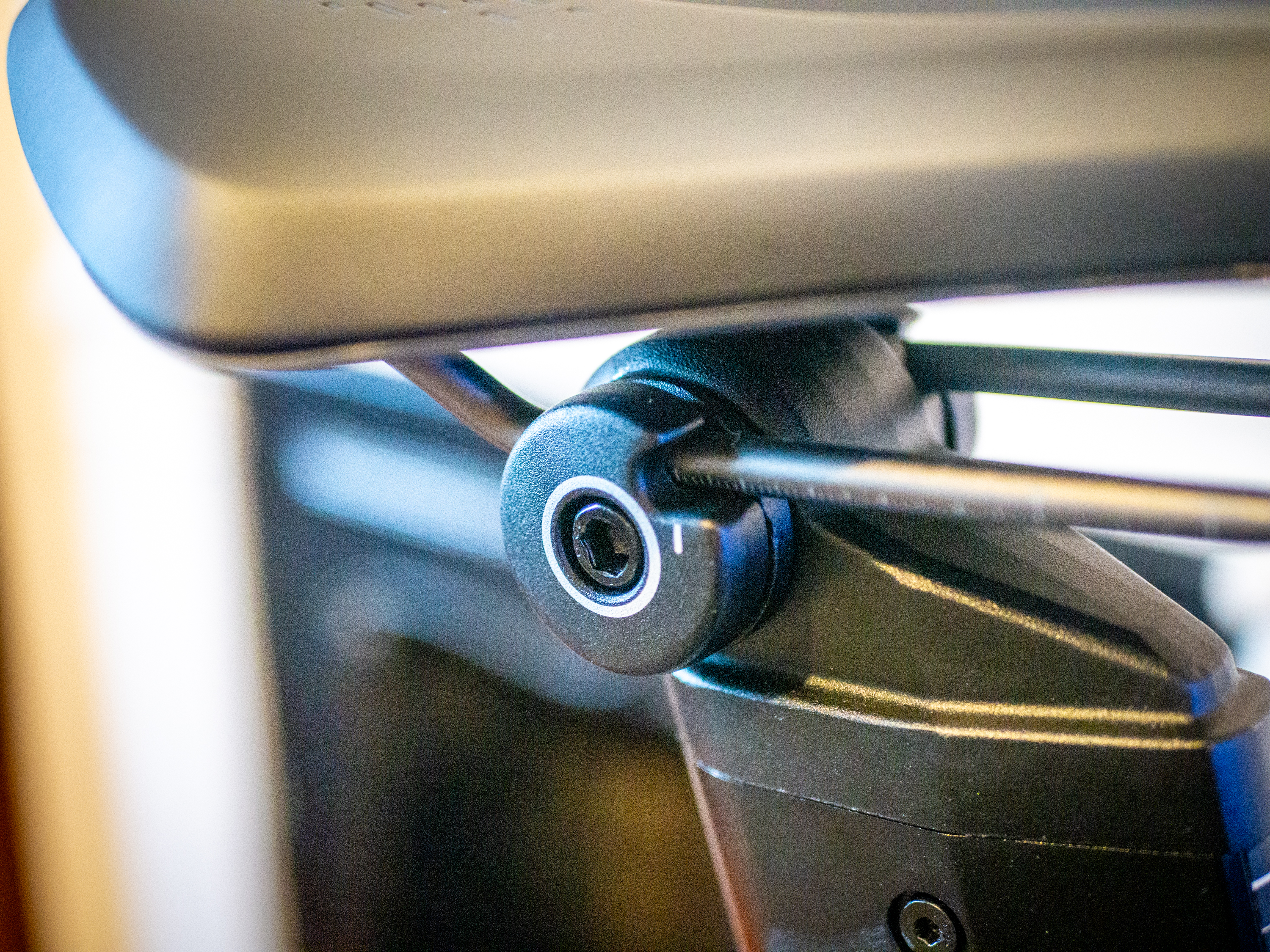
Overall, it is suitable for riders between 152cm and 198cm tall, with a maximum rider weight of 120kg.
Up front, the controls are battery-powered and rechargeable, but neatly integrated cable routing beneath the bar tape leaves two charging ports exposed beneath the stem. A double-ended USB-C cable is included, so you can either charge them both simultaneously or as I do (and suspect most people will), you can leave them plugged in.
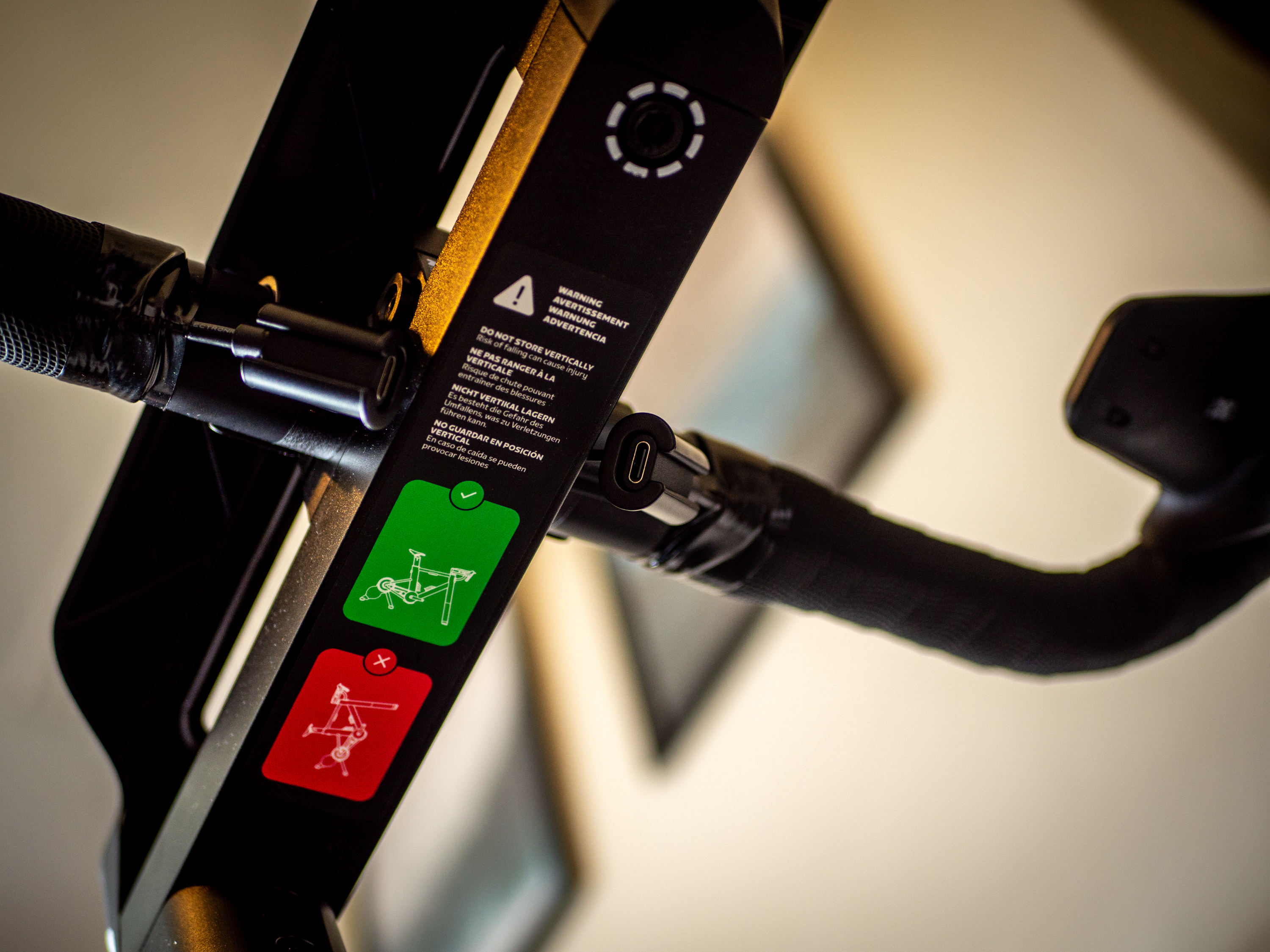
At the rear, the chain is routed via a sprung tensioner. When setting up, you'll push the orange handle down to release the tension and let you mount the Frame to your smart trainer. Once mounted, push the orange handle back up and it'll add tension to the chain.
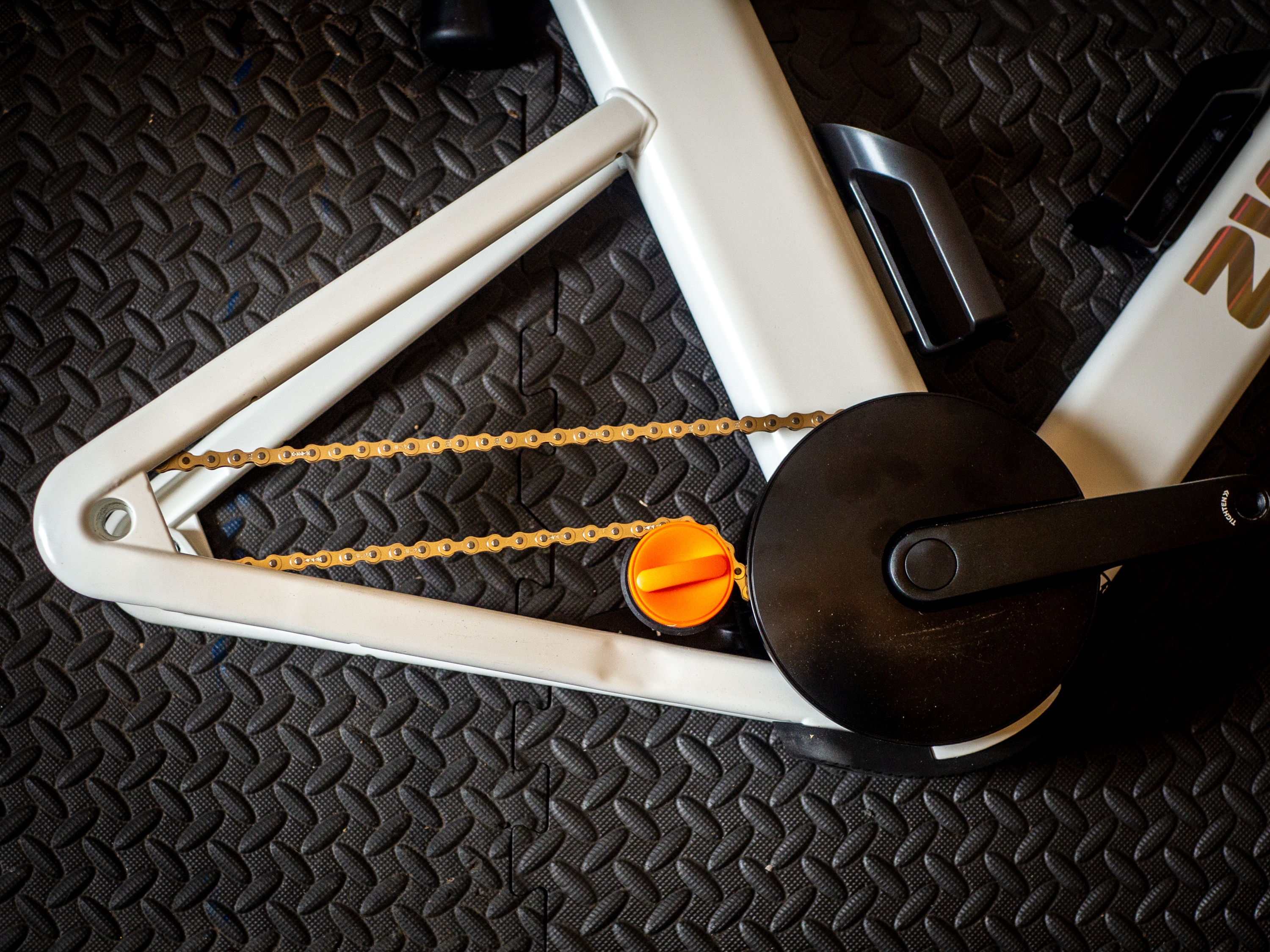
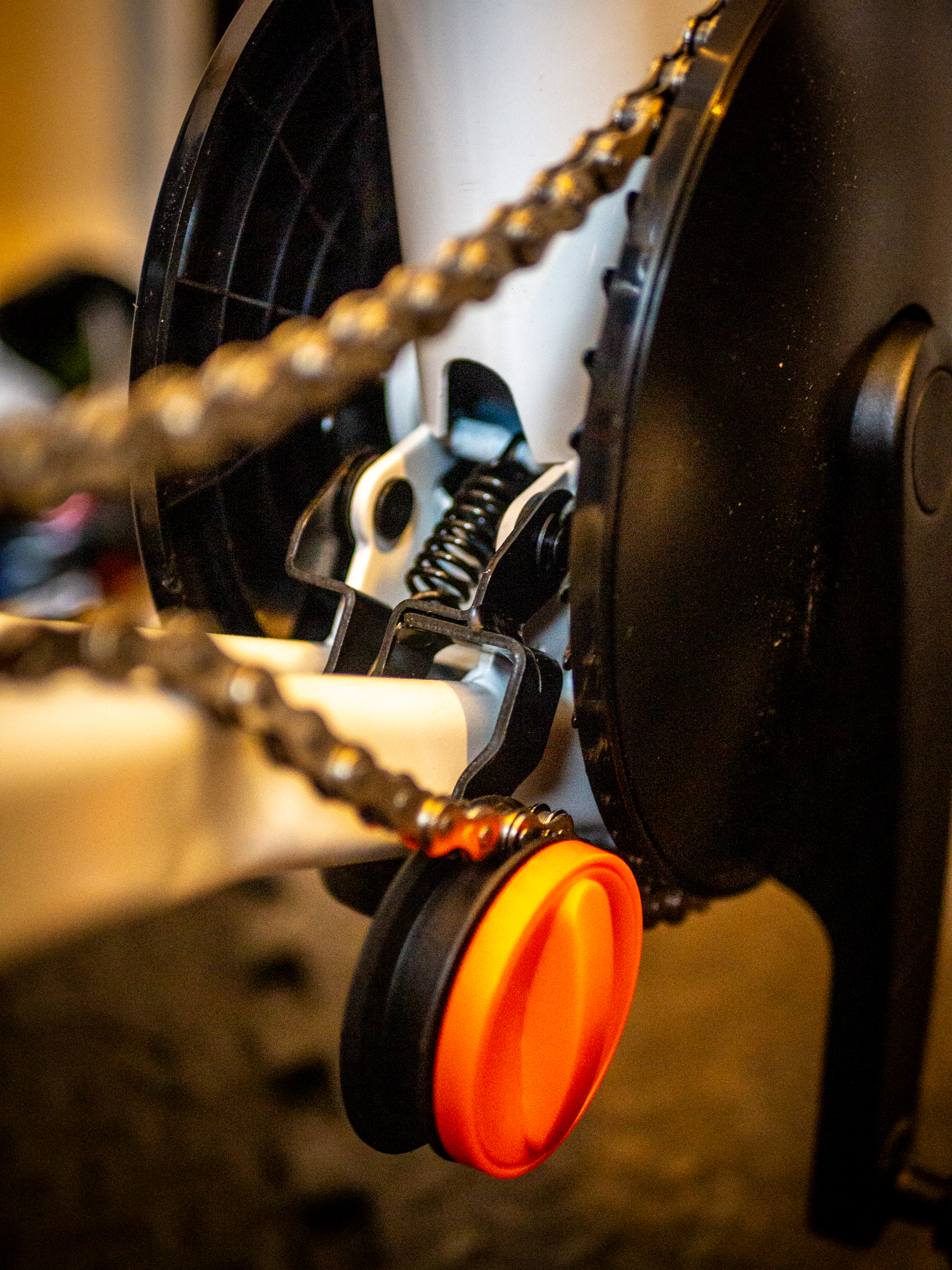
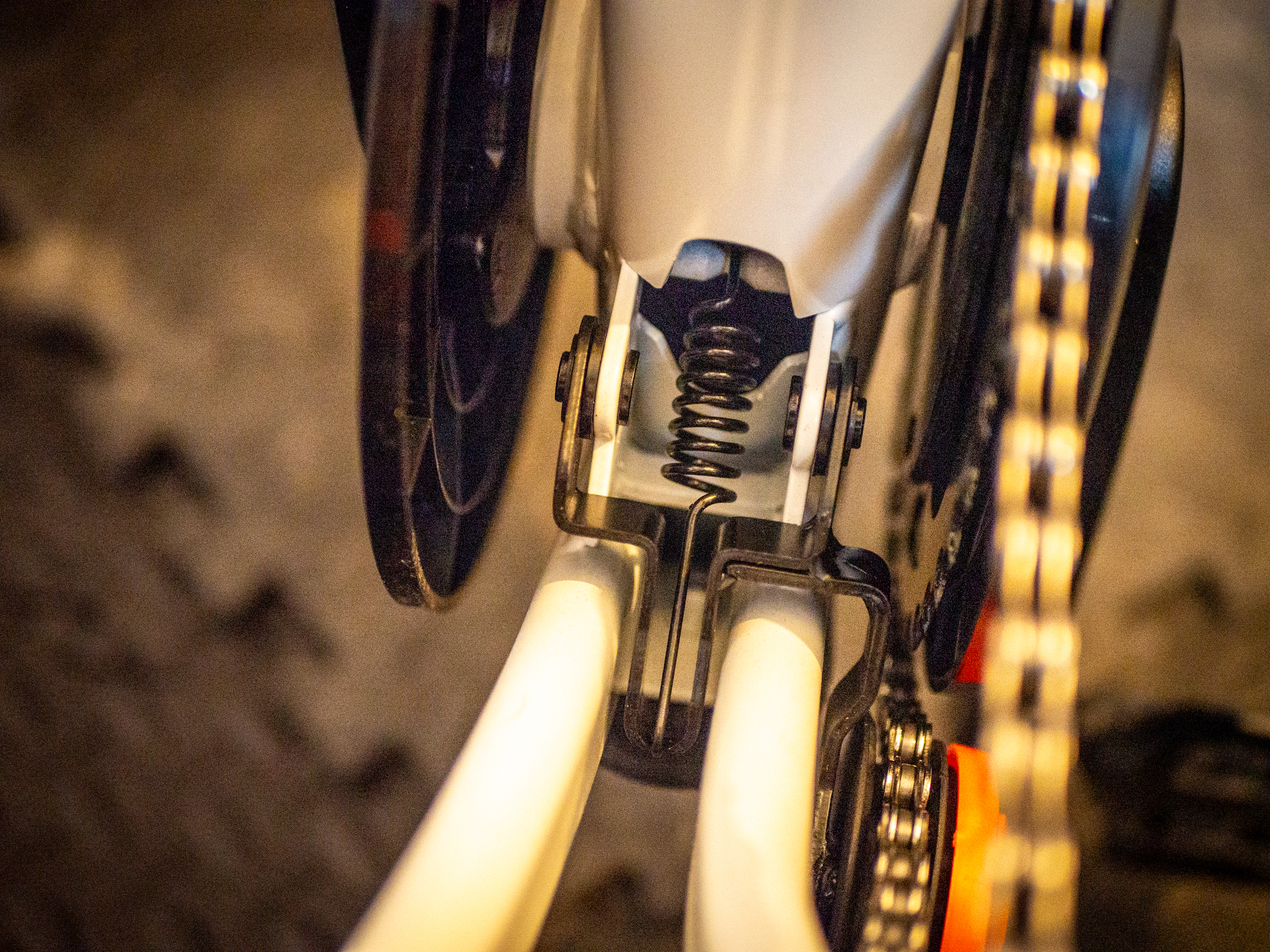
It also comes with two bottle cages. These are quite 'open' in their design, more like cradles than cages, but given the lack of movement of the bike, this is all that's needed - they work fine and make grabbing and restowing a bottle super easy.
Performance
To state the obvious, the ride feel of the Zwift Ride / Frame is very much like riding a road bike on a smart trainer. The only real differences are in the frame stiffness, which feels quite stiff when trying to crank on the bars or push big watts. Given there's no road buzz coming through the handlebars, this isn't an issue to the comfort.
The chainset itself is fairly basic and uses a square taper bottom bracket. The 150mm Q Factor isn't too far from a traditional road bike, so hasn't caused any issues for me despite some pretty heavy training. The crank length is fixed to 170mm. This is a good 'everyone' solution, but I would have liked to see the same solution that is employed by Wahoo, with multiple holes to let people choose their desired length.
I've not had any real issues with stability either. The Kickr Core's not the widest or most stable trainer out there, and it doesn't have adjustable feet to account for uneven floors, but I've used it on multiple occasions with both a bike and with the Zwift Frame and never felt like I couldn't give my all in a sprint.
Noise levels are slightly higher than other smart bikes, but are overall quieter than a bike-on-trainer setup. Of course, how clean and well-lubricated your chain is will dictate the ongoing noise somewhat, and a benefit here is that the indoor-only nature of the Zwift Frame means it'll never get caked in mud, grit or grime, and thus the chain stays relatively clean for long periods. However, the biggest source of noise on a traditional bike-on-trainer setup is the clunk you get each time you change gears. With shifting made virtual, that noise is gone.
I would like to see Zwift work on a belt-drive version for the next iteration to bring the noise down even further, but as it stands, it's no noisier than a fan.
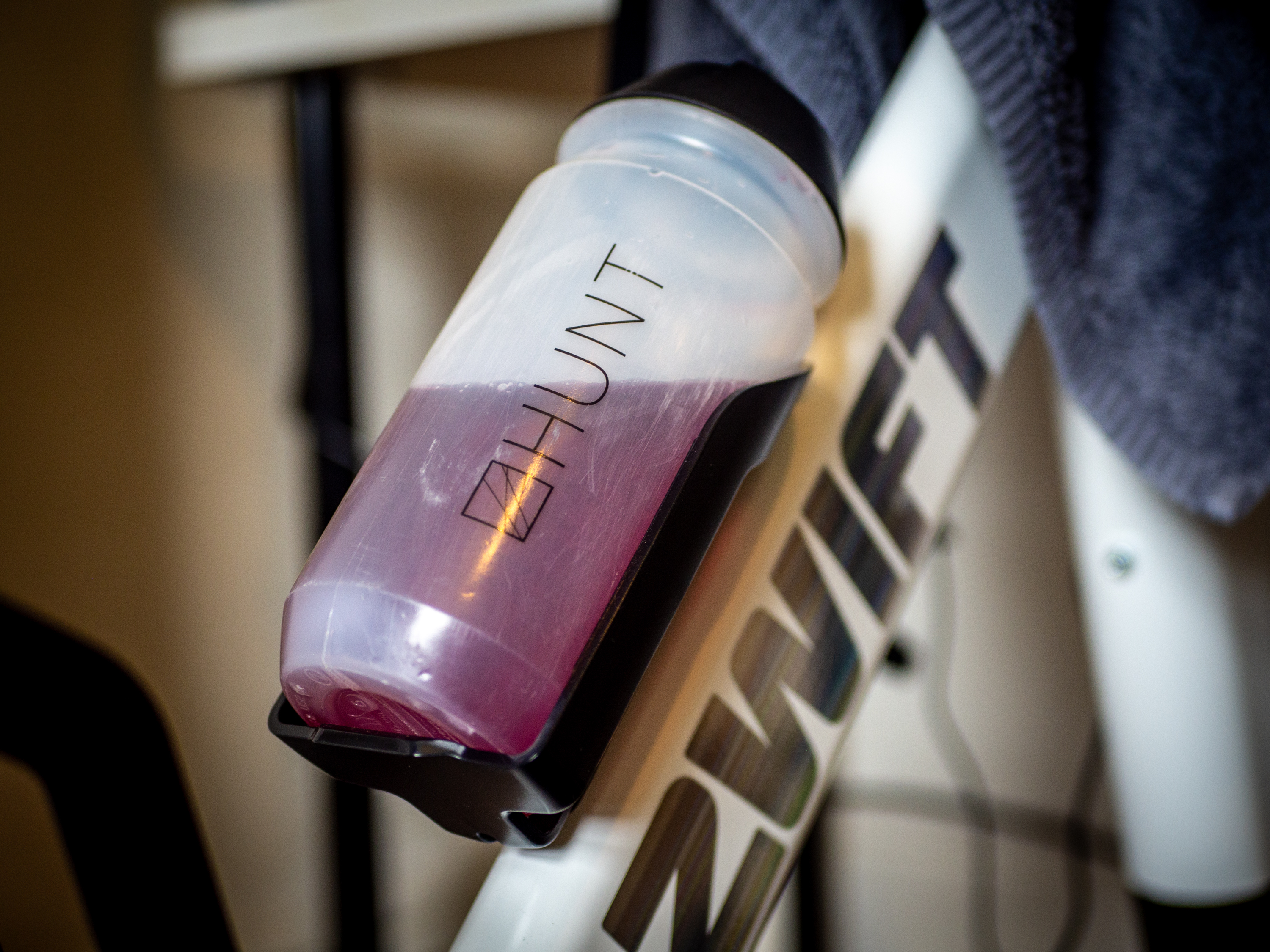
Compatibility
During my time using the Zwift Ride, I've only used it with the Kickr Core smart trainer. I've spent my time predominantly on Zwift, TrainerRoad and MyWhoosh, and there are some compatibility issues to highlight.
As explained earlier, the problem relates to the firmware, rather than the physical compatibility. The upfront controls that enable virtual shifting are essentially just passing a signal to the smart trainer (via Zwift) to add some resistance to mimic a gear change.
Until a smart trainer updates its firmware such that it can receive this prompt and adjust the virtual gear accordingly, you'll be stuck in a single gear when you try to ride. Erg mode - where the app controls the trainer's resistance to follow a workout without the need to shift - works fine.
It's for this reason too that the Zwift Ride is only fully compatible with the Zwift app. If you try to shift in MyWhoosh, for example, nothing will happen, because the shifters are designed to talk to the Zwift app, rather than directly to the trainer.
It doesn't look as though a fix for this is coming any time soon, but there are reports of Zwift working on an API to enable other apps to connect to the controls.
If you want to follow a workout in Erg mode in another app, it works fine. I've done this in MyWhoosh and TrainerRoad, and although it works, it removes all functionality of the buttons on the handlebars. That's not a major issue but it would be pointless paying for it if you spend your time exclusively in these apps, rather than on Zwift.
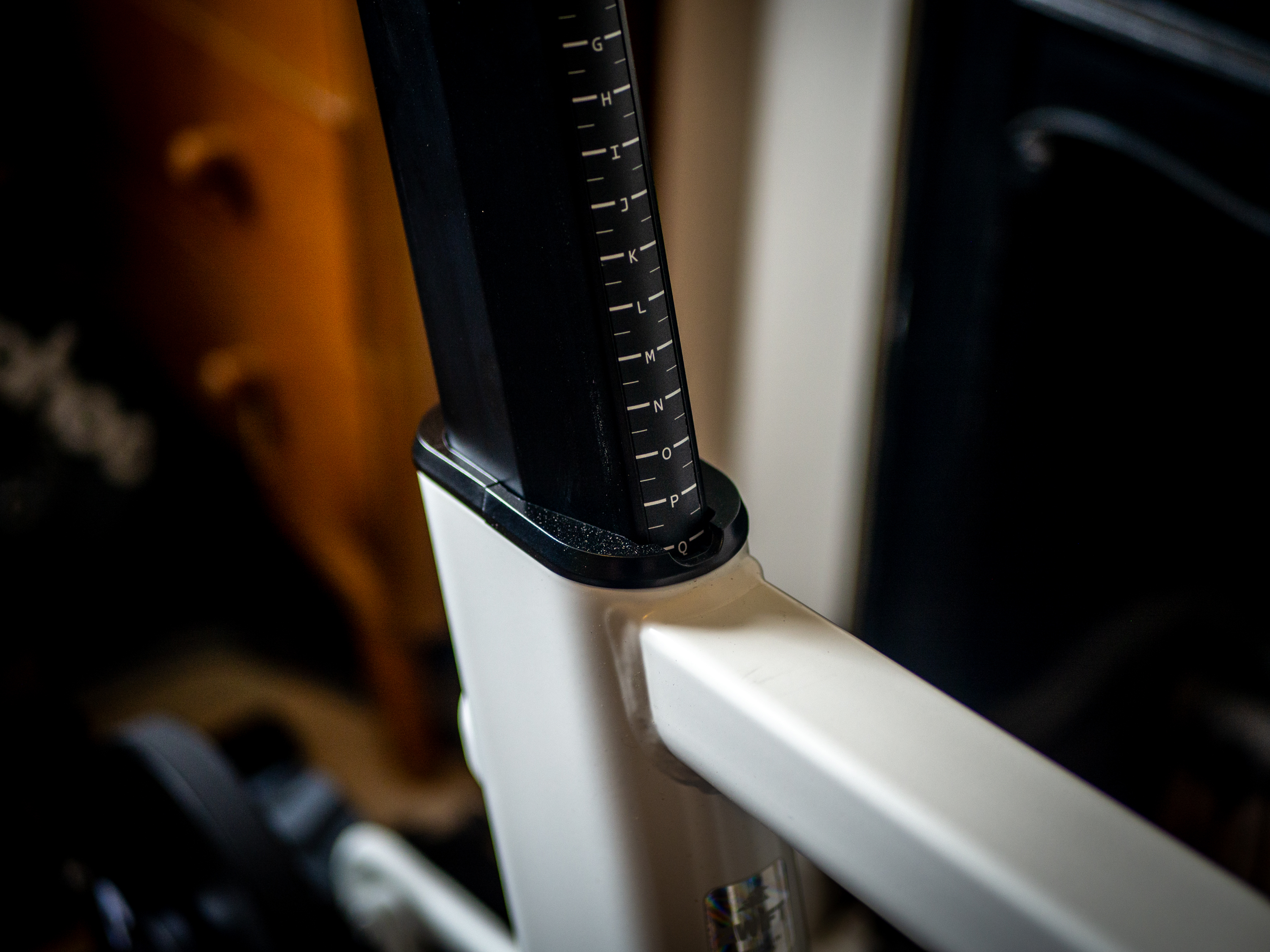
Functionality
Assuming you'll spend your time using Zwift, the bulk of the buttons are something of a game-changer. They make navigating the menus, giving 'ride-ons' and activating 'power ups' super easy. No faffing with a smartphone screen using sweaty hands.
The buttons are conveniently placed and sweat-proofed, but care needs to be taken not to hit the Z button as it sits quite close to where I place my hands. Shifting can be set up to mimic Shimano or SRAM groupsets, or it can be set up in sequential mode, which is essentially a straight line of gears from 1-22. There is a very faint vibration upon shifting, but you'll easily miss it.
The tactility of the buttons isn't super clear. The shifters and brakes especially are vague, and although you could argue brake levers shouldn't have a 'click' button feedback, I find them to be stiff, with nothing to tell you whether you've pressed them.
I also found the handlebars quite uncomfortable. The tape is really thin so I'd be looking to double wrap, and the angularity of the shifter hoods isn't much more comfy. In most cases, I have just thrown a towel over the bars to catch the sweat and add padding, but this hides the buttons, so doesn't work so well when riding in Zwift.
Connectivity
The hardware side of the bike has been flawless, and for the most part, the connectivity was exactly as you need it to be, but on a handful of rides I suffered recurring connection drops during rides, which meant I was unable to shift gears for around 10 seconds while it reconnected. This was particularly frustrating at the bottom of climbs.
The shifter also stuck 'on' a few times, sending me hurtling down the virtual cassette to the hardest gear without warning, forcing me into leg-sapping high-torque efforts to stay with a group while mashing the down-shift button.
I've had the Zwift Ride for approximately six months and this has only happened a handful of times. I believe it was more as a result of multiple Bluetooth devices fighting over a connection. While it's unlikely to be a regular issue for most users, it's one to watch.
Value
To assess the value of the Zwift Ride - and the Zwift Frame - there are a few ways to look at it. If you compare it to existing smart bike setups, the value here looks incredible. It offers similar functionality, with inbuilt app controls, at a significantly lower price than the competition. The Wahoo Kickr Bike Shift is £2,199 / $2,499, for example, and it's not even the top end of what's available.
If compared to a bike-and-trainer setup, you're paying £749.99 for the bike portion of an indoor setup, along with in-built controls. Or £1199.99 for all of that and the Kickr Core smart trainer.
Given the Kickr Core would set you back £449.99, that's £750 for a bike frame and the Zwift Play controls, although it can only be used indoors. You could get a very entry-level road bike for similar money, but it won't get you the up-front controls or the multi-rider adjustability.
It's a fairly big outlay on a pretty specific product for a niche use case. It's probably not worth buying if you're the only user in your household and already have a spare bike you don't mind leaving on the trainer, but if you're looking to build your indoor training space, have family members that want to ride, or want to keep the wear and tear off your other bike, the value is great.
The competition
There's only really one competitor in the space, and that is the Elite Square which launched shortly after the Zwift Ride. I've not had the chance to try that yet, but on paper, it does address some of the downfalls I've mentioned with the Zwift Ride, such as multiple crank lengths and belt drive, but at £1,199 without a smart trainer, it's a significantly higher outlay to get started.
Verdict
Overall, the Zwift Ride is a budget-friendly foray into smart bike tech, thanks to the clever decision to leverage the existing tech of smart trainers and the Zwift Play, and simply design the rest of the equation.
For riders using Zwift as their primary platform, it's a great solution to a set-and-forget indoor cycling setup that saves putting additional wear and tear on your outdoor bike and traipsing it through the house every time you want to switch between riding indoors and out. It helps that it can be used by other family members too.
There are some compatibility limits though, so if you find yourself using any other app where shifting is required - such as MyWhoosh or Rouvy - then you'll be stuck in one gear for as long as it takes for Zwift and those apps to collaborate on the necessary firmware.
Features | The usual functionality of a smart trainer, plus good frame adjustment and smart Zwift-controlling buttons up front. Functionality is great, but the compatibility lets it down. | 8/10 |
Trainer specifications | Depending on the trainer used, but when bought with the Kickr Core, it gets 1800 watts, 2% accuracy and 16% gradients | 8/10 |
Ride comfort | Slightly stiff ride but not problematically so. Uncomfortable handlebar lets it down, and the fixed 170mm crank length might put some users off. | 7/10 |
Noise and stability | Not quite as quiet as a belt-drive smart bike, but much quieter than a bike-and-trainer setup, helped by the virtual shifting | 9/10 |
Value | Excellent value when compared to smart bikes, and still great when compared against other bike-and-trainer setups | 9/10 |
Overall | Row 5 - Cell 1 | 41/50 |
Enhance your fitness journey from home. Discover our Zwift coupons and gear up for interactive workouts.

Josh is Associate Editor of Cyclingnews – leading our content on the best bikes, kit and the latest breaking tech stories from the pro peloton. He has been with us since the summer of 2019 and throughout that time he's covered everything from buyer's guides and deals to the latest tech news and reviews.
On the bike, Josh has been riding and racing for over 15 years. He started out racing cross country in his teens back when 26-inch wheels and triple chainsets were still mainstream, but he found favour in road racing in his early 20s, racing at a local and national level for Somerset-based Team Tor 2000. These days he rides indoors for convenience and fitness, and outdoors for fun on road, gravel, 'cross and cross-country bikes, the latter usually with his two dogs in tow.
